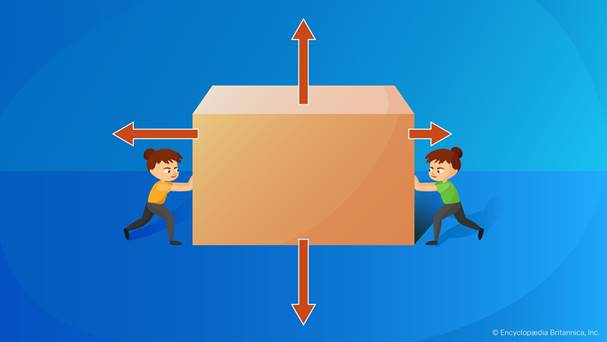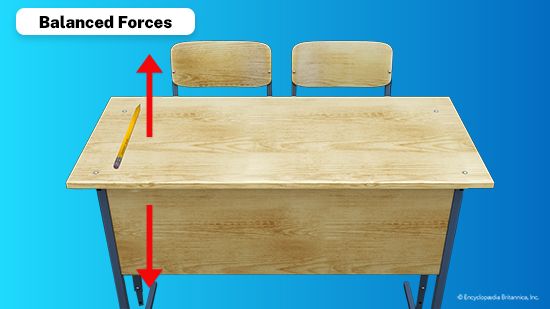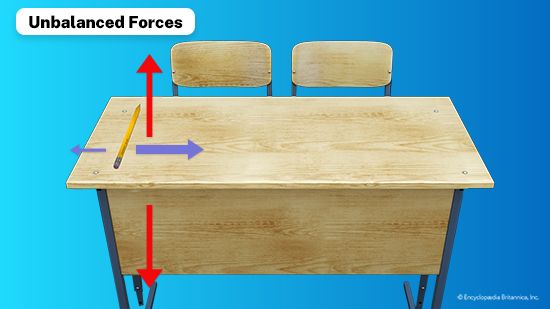Balanced and
Unbalanced Forces
Learning
Objectives
By the end of this unit, you will define
balanced and unbalanced forces, identify balanced and unbalanced forces, and
utilize observation to determine forces.

The
push on a swing is a force, but it's not the only force acting on you when you
swing.
© Stockbyte/Thinkstock
Lesson
Summary
This lesson introduces the idea that the
combined forces that act on objects and people can be balanced or unbalanced.
Through video, text, and images, you will learn how to determine whether forces
acting on an object are balanced or unbalanced, including by observing the object's motion.

Arrows
can be used to represent the forces acting on an object.
Encyclopędia
Britannica, Inc.
Key Concepts
1. Balanced forces occur
when two or more forces acting on an object are equal in strength and opposite
in direction, resulting in no change in the object's motion.
2. Unbalanced forces
happen when the forces acting on an object are not equal or opposite, causing
the object to accelerate, decelerate, or change its direction.
3. Using our powers of
observation, we can determine if the forces acting on an object are balanced or
unbalanced based on whether the object remains at rest, moves at a constant
speed in a straight line, or undergoes changes in its motion.

The
force of gravity pulls the pencil down while the desk pushes up on the pencil.
The forces are balanced.
Encyclopędia
Britannica, Inc.
Background
To understand balanced and unbalanced forces,
let's first talk about what a force is. Simply put, a force is a push or a pull
that can make an object move, stop, or change its direction. Forces are all
around us, whether we realize it or not. When you kick a soccer ball, you apply
force to make it move. When you push a door open, you exert a force to overcome
its resistance.
Now, let's explore balanced forces. When two or
more forces act on an object, and their magnitudes and directions cancel each
other, we say the forces are balanced. In other words, the forces are equal in
strength and opposite in direction, resulting in no change in the object's
motion. For example, imagine a book sitting on a table. Gravity pulls the book
downward, while the table exerts an equal and opposite force, pushing the book
upward. As a result, the book remains stationary because the forces are
balanced.
On the other hand, unbalanced forces are
different. When the forces acting on an object are not equal or opposite, they
create a net force that causes the object to accelerate or change its motion.
In other words, unbalanced forces lead to a change in an object's velocity. For
example, if you push a toy car with greater force in one direction than the
opposing force of friction, the car will start to move because the forces are
unbalanced.
To determine if the forces acting on an object
are balanced or unbalanced, we can use our powers of observation. We can
carefully observe the object's motion or lack thereof. If the object remains at
rest or continues to move at a constant speed in a straight line, we can
conclude that the forces acting on it are balanced. However, unbalanced forces
are at play if the object accelerates, decelerates, or changes direction.
By understanding balanced and unbalanced forces
and using our powers of observation, we can unlock the secrets of motion and
better comprehend the world around us. So, get ready to explore the forces in
action and become skilled scientists in detecting whether forces are balanced
or unbalanced. Let's embark on this exciting scientific journey together!

If
you push a pencil, and that force is greater than the force of friction, the
forces are unbalanced.
Encyclopędia
Britannica, Inc.
Expedition
Learn
Click on the image to begin your unit.
